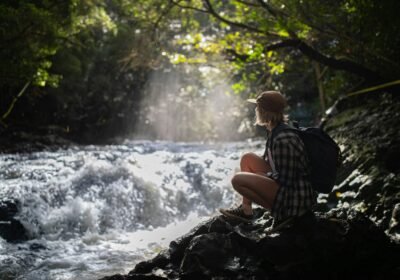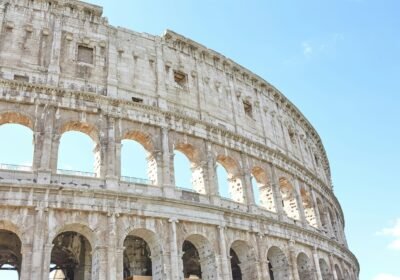Discovering Dominica: A Journey Through History, Architecture, and Culture
The Origin Story of Dominica
Dominica, often referred to as the “Nature Island of the Caribbean,” has a rich and complex origin story that is essential for understanding its historical significance, architecture, and cultural impact. The island was first inhabited by the indigenous Kalinago (Carib) people, who were the dominant group prior to European arrival. The Carib people, known for their intricate social structures and deep connection to the land, named the island “Waitukubuli,” translating to “tall is her body,” reflecting the island’s mountainous terrain.
The European encounter began on November 3, 1493, when Christopher Columbus sighted the island on his second voyage to the New World. He named the island “Dominica” as it was discovered on a Sunday. This marked the beginning of a tumultuous chapter in Dominica’s history, as various European powers sought control over the island due to its strategic location and natural resources. The British and French colonizers arrived in the 17th century, further shaping the cultural landscape as they engaged with the indigenous Carib communities.
Key historical events, including conflicts and treaties, such as the Treaty of Paris in 1763, resulted in significant changes in the governance and cultural influences on the island. The British eventually gained ownership, leading to the displacement of many Carib people and the introduction of African slaves to work on plantations. This mix of indigenous, European, and African cultures has created a unique cultural tapestry that young people and historians alike explore today.
As Dominica evolved over the centuries, its distinctive blend of cultures became evident in its architecture, festivals, and traditions. The resilience of the island’s people, in the face of colonization and natural disasters, illustrates the enduring spirit of Dominica. Understanding this origin story is crucial to appreciating what visitors experience today and why Dominica’s historical significance remains so compelling.
Key Historical Events and Notable Figures
Dominica’s history is deeply intertwined with the larger narrative of Caribbean colonialism and resistance. One of the most significant events in the island’s history occurred in 1493, when Christopher Columbus first spotted Dominica during his voyage to the New World. Columbus’ discovery marked the beginning of European interest in the island, eventually leading to the influx of European powers, including the French and British, who vied for control over this strategic territory.
The island’s indigenous population, the Kalinago (Carib) people, faced significant challenges as colonial pressures escalated. The 18th century was marked by significant conflicts between the Kalinago and European settlers, notably during the French and Indian War (1754-1763). Over time, British control was solidified with the Treaty of Paris in 1763. Events such as the abolition of slavery in 1834 significantly altered the social makeup of Dominica, introducing freed African slaves who contributed to the island’s agricultural development.
Notable figures emerged throughout Dominica’s turbulent history, shaping its social and political landscape. One prominent individual is Mary Eugenia Charles, who became Dominica’s first female prime minister in 1980 and served for an unprecedented 15 years. Her leadership was pivotal in advancing education and healthcare on the island, reflecting the societal changes following independence from British rule in 1978. Another influential figure is Sir George Charles, who was an advocate for workers’ rights and played a crucial role in the formation of political parties that sought greater autonomy for the people of Dominica.
Through these historical events and figures, we can observe how Dominica has evolved over centuries, navigating external conflicts and internal changes. This exploration of the island’s past not only enriches our understanding of its cultural heritage but also highlights why Dominica remains a fascinating destination today, drawing visitors eager to experience both its history and its vibrant culture.
Architecture of Dominica: A Fusion of Cultures
The architecture of Dominica serves as a visual narrative that encapsulates the island’s rich history, cultural evolution, and the harmonious blend of diverse influences over the centuries. An exploration of Dominica’s architectural styles reveals a tapestry woven from indigenous, colonial, and modern threads that tell the story of a vibrant island shaped by its historical experiences.
From the outset, the architectural landscape in Dominica was defined by the indigenous Carib people, whose structures were often simple yet functional, showcasing a deep understanding of their natural surroundings. As European powers began to colonize the island in the 18th century, the architectural style transitioned dramatically. Colonial forts, such as Fort Shirley located in Portsmouth, and churches like the Cathedral of Our Lady of Fair Haven in Roseau, were erected. These edifices were not merely functional; they were symbols of power and religious influence, core components of the island’s colonial past.
In contemporary times, the architectural landscape of Dominica has evolved significantly, marked by modern designs that reflect the island’s cultural vibrancy. This evolution is indicative of the people’s resilience and adaptability, which are hallmarks of Dominica’s identity. Efforts to preserve historical structures face challenges, primarily due to natural disasters like hurricanes that can severely damage or even obliterate these cultural landmarks. Nevertheless, community interest and government initiatives aim to conserve these historical sites, ensuring that they continue to be part of the island’s storytelling.
This architectural journey through Dominica portrays not just the evolution of buildings but also stands as testimony to the island’s rich cultural tapestry. Observing the intricate details and varying styles allows visitors to appreciate how the past intertwines with the present, highlighting the seamless integration of Dominica’s historical significance and contemporary life. The architecture goes beyond mere aesthetics; it reflects the resilience of a society that continues to evolve while honoring its origins.
Cultural Impact and Visitor Experience Today
Dominica’s rich historical tapestry and remarkable architecture significantly contribute to its vibrant cultural landscape, making it an appealing destination for travelers and history enthusiasts alike. This Caribbean island, known for its unspoiled natural beauty, also boasts a unique cultural heritage shaped by generations of indigenous peoples, colonial influences, and the fusion of African and European traditions. Visitors who wish to immerse themselves in this heritage can experience an array of cultural events, festivals, and culinary delights that reflect the island’s past.
One prominent aspect of Dominica’s cultural scene is its various festivals that celebrate the island’s history and community spirit. Events like the World Creole Music Festival showcase local and international artists, blending diverse musical genres rooted in the island’s ancestry. Similarly, the annual Carnival, known locally as “Mas,” allows visitors to witness vibrant parades filled with colorful costumes, energetic performances, and traditional music, providing a glimpse into the island’s dynamic social fabric.
In addition to festivals, Dominica’s culinary landscape plays a crucial role in cultural preservation and identity. Visitors can indulge in local dishes like “Mountain Chicken” and callaloo soup, which are prepared using traditional techniques passed down through generations. These culinary experiences not only satiate the palate but also tell the story of Dominica’s multicultural roots and influences.
Naturally, the beautiful landscapes and pristine environments also contribute to the island’s allure. Tourists can explore the lush rainforests, volcanic hot springs, and stunning waterfalls that symbolize Dominica’s natural heritage, while eco-tours often involve interactions with local guides who share stories about the island’s history and conservation efforts. This intertwining of culture and nature emphasizes the importance of Dominica as a destination that remains committed to preserving its historical significance while offering engaging experiences for visitors.









